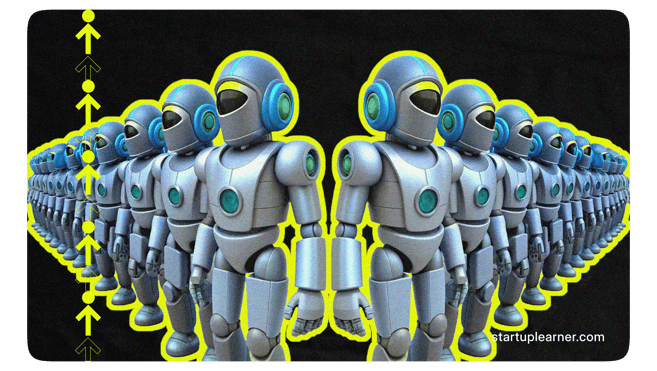Agentic AI and the Future of Intelligent Autonomy: From Reactive Tools to Proactive Collaborators
AI
Startup Learner
5/2/20253 min read



Introduction:
We’ve all seen what generative AI can do — from writing essays to creating stunning images with a prompt. But as we begin to rely more on these tools, a new class of AI is emerging: agentic AI. Unlike its generative predecessors, agentic AI doesn’t just react — it acts. And that shift could redefine how we interact with technology, work, and the world around us.
Understanding the Difference: Generative vs. Agentic AI
At its core, generative AI is reactive. It waits. You provide a prompt, and it produces something — a paragraph of text, an image, a snippet of code. It’s like a supercharged autocomplete engine, trained on vast datasets to predict what should come next.
But once it responds, it stops. It doesn’t initiate further action. It doesn’t reflect, revise, or proceed on its own.
Agentic AI changes that. It still begins with a prompt, but then it moves forward through a self-driven process. It perceives its environment, selects an action, executes it, learns from the outcome, and continues — largely without human intervention.
In short, generative AI answers. Agentic AI solves.
The Rise of Proactive Systems
This evolution isn’t just theoretical — it’s already showing up in real-world applications.
A generative system might help a YouTuber generate script ideas, thumbnails, and background music — but at every step, a human reviews, adjusts, and directs the output.
An agentic AI, by contrast, could plan an entire conference with minimal input. It might research venues, compare prices, check availability, coordinate bookings, and even monitor logistical updates — all while maintaining a conversation with the user only when decisions are needed.
This isn’t just automation. It’s autonomy.
The Engine Behind the Intelligence: LLMs and Chain-of-Thought Reasoning
The backbone of both generative and agentic AI is the large language model (LLM). But when deployed in agentic systems, LLMs are asked to do more than generate responses — they’re asked to think.
Using what’s known as chain-of-thought reasoning, agentic systems break down complex goals into intermediate steps. For example, in organizing a conference, the system might generate internal prompts to assess requirements, shortlist vendors, evaluate costs, and take next steps — almost like thinking out loud.
It’s this internal dialog, powered by LLMs, that gives agents their planning and reasoning capabilities.
Real-World Potential: Where Agentic AI Will Thrive
The biggest advantage of agentic AI is its applicability to multi-step, high-context tasks — the kind of things humans do every day, but which traditional automation can't touch.
Consider these examples:
A personal shopping agent that hunts for deals, waits for price drops, and auto-orders when conditions are met.
A research assistant that not only finds papers but reads them, summarizes them, and suggests next steps.
An operations manager that autonomously schedules, tracks, and updates logistics based on changing data.
In all these cases, the value isn’t in generating output — it’s in completing objectives.
The Hybrid Future: Collaborators, Not Just Tools
As these systems evolve, we’ll likely see AI agents that blend the best of both worlds. They’ll generate options and content when needed, then execute those options autonomously — a seamless transition from ideation to action.
Imagine an AI that drafts your report and sends it to the right stakeholders. Or one that writes marketing copy, runs A/B tests, and updates your website accordingly.
That’s the direction we’re headed. Not just smarter tools, but smarter collaborators.
Conclusion: Why It Matters Now
As AI advances, the leap from reactive to proactive systems will shape every domain — from business to defense, from education to entertainment. Agentic AI won’t just respond to our needs. It will anticipate them. And in doing so, it will change what we expect from software — and from ourselves.
This isn’t the future of automation. It’s the future of agency.



